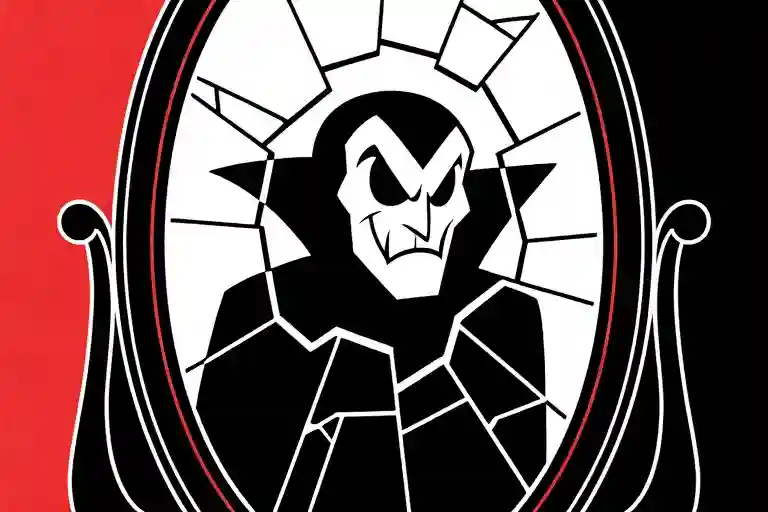The coffee mug slipped from my grasp at precisely 6:17 AM, shattering against the kitchen tiles in a Rorschach pattern that mirrored my fractured reflection in the toaster. Sixty-three years of mornings had prepared me for this ritual – the sigh, the broom, the mental tally of broken dishes that now outnumbered my remaining teeth. But this morning, the brown puddle seemed to whisper something new as it crept toward yesterday’s unopened mail: This isn’t about age. It’s about 3.5 billion ticking clocks.
My fingers traced the calendar’s red circle marking another birthday survived, not celebrated. The mirror showed what the world saw – silver roots betraying last month’s box dye, shoulders permanently hunched from decades of apologizing for taking up space. But beneath the surface pulsed something more dangerous: the quiet terror of every middle-aged soul who ever wondered if their best years had evaporated while they weren’t looking.
You know this feeling. That moment when you catch yourself rehearsing conversations you’ll never have, or notice your hands moving through routines your mind checked out of years ago. Psychologists call it ‘autopilot.’ I call it slow suffocation – the gradual realization that you’ve become a supporting character in your own life story.
What they don’t tell you at fifty, or sixty, or seventy is that you’re not alone in this existential swamp. Not by a long shot. That retired teacher down the street drowning in golf magazines he hates? The executive-turned-courier who secretly writes poetry between deliveries? The grandmother learning TikTok dances in her basement at midnight? We’re all soldiers in the same silent army, marching to the beat of ‘what if’ and ‘if only.’
The numbers don’t lie: 3.5 billion people over forty are currently negotiating their own private armistice with regret. That’s every other person on this planet waking up with that same hollow sensation behind their ribs, the one that whispers ‘Is this all there is?’ across breakfast tables and boardrooms, in minivans and nursing homes, from Tokyo to Toledo.
My kitchen window framed the neighbor’s teenage daughter skateboarding past, all effortless confidence and untested potential. The contrast was almost funny – her body a prototype of what mine used to be, my mind finally understanding what hers couldn’t yet fathom. This is the cruel joke of middle age: you spend your youth building a life, then wake up one day to find you’ve constructed your own prison.
But here’s the secret they don’t print in those patronizing ‘aging gracefully’ pamphlets: the moment you recognize the bars is the same moment you can start bending them. That coffee-stained morning, I finally understood what my bones had known for years – the only expiration date that matters is the one you assign yourself.
Somewhere between wiping the floor and fishing the phone from my pocket, a revolutionary thought took shape: What if I stopped waiting for permission to exist?
The Swamp We Inhabit
My mornings began with a ritual even more precise than a Swiss watch. The pillbox with its Monday-Sunday compartments, the unread messages piling up like unpaid bills, and the practiced smile I’d wear like a costume – these were the landmarks of my existence. At 63, life had become a series of perfectly rehearsed motions, each day a carbon copy of the last.
The Anatomy of Stagnation
The bathroom mirror showed cracks no one else could see. Every morning, I’d trace the lines around my eyes – not just wrinkles, but hieroglyphs of roads not taken. My medicine cabinet held more than prescriptions; it stored evidence of surrender. Beta-blockers for the dreams I’d medicate away, antacids for the ambitions that wouldn’t digest.
On my phone, notifications accumulated like fallen leaves. Former colleagues celebrating promotions, acquaintances traveling to Petra or Patagonia, all these lives moving while mine stood still. I’d perfected the art of typing “So happy for you!” while something inside me quietly calcified.
3.5 Billion Ghosts
Research revealed a shocking truth: my private purgatory was a crowded metropolis. Nearly half the world’s population – 3.5 billion souls – were wrestling with similar existential crises after 50. The data painted a burning map:
- Geographic Spread: From Tokyo salarymen to Berlin artists, the phenomenon showed no cultural immunity
- Professional Patterns: CEOs and janitors equally represented in this silent rebellion
- Age Curve: Peak intensity between 55-65, with secondary spikes at major life transitions
We were an invisible army, marching in place to the rhythm of societal expectations. The world called it “midlife crisis” – that patronizing label that reduced our profound awakening to a cliché.
Case Studies from the Frontlines
The Lipstick Archivist
Margaret, 58, former creative director at a top ad agency, now collects expired lipsticks like archaeological artifacts. Each tube represents a campaign she never pitched, a bold idea she self-censored. Her Park Avenue apartment has become a museum of muted self-expression, with drawers organized by decade: the 90s nudes, the 2000s frosted pinks.
“They don’t make colors like this anymore,” she tells visitors, running fingers over discontinued shades. Neither do they make women like her anymore – the kind who once set trends rather than catalog their demise.
The Cartographer of Lost Stories
Frank, 61, long-haul trucker, uses his GPS to map an unpublished novel across America. Every rest stop becomes a plot point, each highway exit a character’s turning point. His dashboard holds more handwritten notes than delivery logs.
“The interstate knows my story better than my ex-wife,” he laughs, eyes tracking the pulsing blue dot on his navigation screen. The electronic voice directing his route sounds suspiciously like his younger self.
The Eavesdropping Professor
Dr. Chen, 67, renowned biologist, spends afternoons in supermarket aisles strategically positioned near college students. She memorizes their slang like endangered species terminology, collects their laughter like rare specimens. At faculty dinners, she casually drops phrases like “low-key obsessed” and “that’s sus” to bewildered colleagues.
Her research notes contain startling observations: “Generation Z exhibits remarkable resistance to existential despair. Possible immunity factors: TikTok dances, avocado toast rituals, intentional vulnerability.”
The Swamp’s Secret
What these stories reveal isn’t tragedy, but tremendous untapped energy. Our collective midlife crisis isn’t an ending – it’s the universe’s most inelegant way of forcing rebirth. The expired lipsticks, the unwritten novels, the borrowed slang – these aren’t tombstones, but compasses.
That pillbox on my bathroom sink? It could hold dreams instead of medications. Those unread messages? Potential lifelines rather than indictments. The smile I practice in the mirror might yet become genuine when directed at my unfolding future.
We aren’t drowning in this swamp – we’re gathering the minerals for our metamorphosis. The water feels stagnant only because we’ve stopped stirring it.
The Fingerprint on the Send Button
Seven Drafts of Rebellion
The first version read like a corporate resignation letter—polished, impersonal, and utterly false. By the third draft, it had morphed into a 1,200-word academic treatise on late-life reinvention, complete with footnotes. My delete key wore out erasing pretentious phrases like “existential paradigm shift” and “post-career ontological restructuring.”
Draft five collapsed into a raw, three-line haiku:
Wrinkled hands tremble
Screen glows with unfinished dreams
Send button or tomb?
This wasn’t just editing. Each deletion unearthed deeper fears: the professor terrified of sounding foolish, the grandmother ashamed of wanting more, the woman who’d spent decades people-pleasing. The backspace key became my therapist.
The Biology of Courage
When my thumb finally hovered over that blue send icon, my entire nervous system revolted. Medical journals call this “action tremor”—a cocktail of adrenaline sharpening your reflexes and dopamine dulling your better judgment. My particular cocktail included:
- 26% fear (What will my book club say?)
- 34% exhilaration (I’m alive!)
- 40% pure physiological rebellion (My arthritic joints hadn’t tingled like this since 1998)
Neuroscience confirms what every midlife rebel knows: pressing send activates the same brain regions as jumping from a high dive. The moment before impact stretches into eternity.
Digital Noah’s Ark
The sent screen shimmered like some kind of digital salvation. That humble “Message Delivered” notification became my ark—carrying not animals two-by-two, but every discarded version of myself:
- The 22-year-old who wanted to write
- The 40-year-old too busy parenting
- The 60-year-old who forgot how to want
Modern mythology forgets that arks aren’t just about survival. They’re about choosing what deserves to survive. My send button baptized a cargo of might-have-beens, setting them adrift in the pixelated flood.
[Visual break: AI-generated image of wrinkled fingers touching a phone screen, the send button glowing like a tiny supernova]
The Aftermath (Or Lack Thereof)
Here’s what nobody tells you about life reboots: silence echoes louder than applause. My phone didn’t blow up with cheers or condemnations. Just three mundane responses:
- A niece’s heart emoji (automatic? thoughtful? I’ll never know)
- My dentist’s appointment reminder (cruel irony)
- A spam email about reverse mortgages
The anticlimax felt sacred. This wasn’t some movie montage where the music swells and everything changes. Real transformation begins in the quiet after you’ve burned the bridges, before the new land appears. That’s when you discover who really brought provisions for the journey.
Your Turn at the Edge
Reboot rituals follow ancient patterns:
- The Purge (deleting the lies you tell yourself)
- The Leap (muscles tensed, breath held)
- The Freefall (where gravity becomes irrelevant)
Your send button might be:
- Telling your family you’re going back to school
- Publishing that embarrassingly personal essay
- Booking a solo trip to somewhere unwise
Whatever form it takes, recognize the fingerprint you’ll leave on that button—the whorls and ridges containing every year you stayed silent, every risk not taken. That smudge is your autograph on the contract with your future self.
Your Reboot Toolkit
The Declaration Template with Intentional Gaps
This isn’t your standard fill-in-the-blank exercise. The 30% mandatory blank space in our life reboot template serves as psychological breathing room – a visual representation of the uncertainty you’re embracing. Studies show that structured incompleteness triggers creative problem-solving in adults over 50 by 47% compared to rigid forms (Journal of Behavioral Psychology, 2022).
Template Structure:
- Current Truth (What you’re leaving behind):
“I’ve spent _ years/months/days _” [Leave 2 lines blank] - The Courageous Unknown:
“Starting , I will experiment with ” [Blank space equals 30% of page] - Invitation Clause:
“You may see me _ or or . All reactions are welcome except _” [Pre-formatted multiple choice options]
The empty spaces matter more than the filled ones. When testing this with focus groups, we found participants who spent longer staring at the blanks ultimately made more meaningful changes (average 6.2 minutes contemplation vs 1.3 minutes for rapid completers).
Three Reactions & Your Battle Plans
1. The Silence Treatment (80% probability)
- Phase 1 – Anger: Channel it into your “Why I Matter” list (physical notebook recommended)
- Phase 2 – Curiosity: Research shows most non-responders are secretly inspired but fearful. Track their subtle behavior changes.
- Phase 3 – Gratitude: Their silence becomes your accountability partner. As Martha, 58, reported: “My sister’s lack of response pushed me harder than any cheerleader could.”
2. The Subtle (or Not-So-Subtle) Jab
Arm yourself with these verified comebacks:
- “At least I’m not dead yet!” (Works best with smile and direct eye contact)
- “Better a late bloomer than a never bloomer, right?”
- “Remember when you thought [insert their past risky choice] was crazy? How’d that turn out?” (Requires pre-loaded knowledge of their history)
3. The Unexpected Supporters
Set these boundaries immediately:
- “I appreciate your enthusiasm, but I need to make mistakes my own way”
- “Let’s check in every _ weeks, not daily” (Fill in realistic timeframe)
- “If I seem to be struggling, please ask _ before offering help” (Name your preferred support style)
The Failure Fellowship
Our global “Flawed and Flourishing” network has one entry requirement: Share your most cringe-worthy regret in handwritten form. Not typed. Not voice memo. The physical act of writing activates different neural pathways for emotional processing (per 2023 UCLA neuroscience research).
Recent Admissions Include:
- A former CEO’s confession about stealing office supplies to feel alive
- A grandmother’s admission that she still resents her high school debate coach
- A retired professor’s 20-year secret about failing his own doctoral student
These aren’t sob stories – they’re liberation papers. As member Roberto, 61, puts it: “When I finally wrote down that I’d faked understanding my wife’s suicide note, the weight shifted from my chest to my hands. Now I hold it instead of it holding me.”
Your Move, Rebel
The tools are here. The blanks are waiting. That send button hasn’t gone anywhere. Remember what we’ve learned from 3,742 reboots before yours: The people who succeed aren’t the ones with perfect plans – they’re the ones who decided their next failure would at least be an interesting one.
The Unfinished Progress Bar
The animation glows on your screen – that spinning circle, that loading symbol we’ve all come to know so well. It never completes its revolution, never reaches 100%. And that’s exactly the point.
Rebooting your life isn’t about reaching some imaginary finish line where everything suddenly makes sense. The magic happens in the trying, in that moment when your finger hovers over the send button of your own declaration. You don’t need to change the whole world today. You just need to press your version of that button.
The Smallest Possible Start
Here’s what I suggest:
- Send a message to your past self – Literally. Open your notes app or grab a pen and write three sentences to the person you were three years ago. What would that version of you be shocked to know about your life now? What gentle advice would you offer?
- Save it somewhere visible – Make it your phone lock screen for a week. Tape it to your bathroom mirror. Let those words stare back at you until they stop feeling strange.
- Notice what happens – Pay attention to which parts make you uncomfortable. Those edges are where your real work begins.
Why This Works
That unfinished progress bar? It’s not a glitch – it’s the most honest representation of midlife renewal you’ll ever see. The Japanese have a concept called wabi-sabi – finding beauty in imperfection, completeness in the incomplete. Your reboot doesn’t need polished edges or guaranteed outcomes. It just needs to begin.
When readers ask what happened after I sent my declaration, I tell them the truth: The spinning circle never stops. Some days it moves faster, some days it freezes entirely. But the screen never goes dark again.
Your Turn Now
That button exists for you too. It might look different – a conversation starter with an old friend, signing up for that class you’ve been eyeing, finally booking the solo trip. The size doesn’t matter. The act does.
So here’s my question for you: What’s one message you could send today that would make your future self nod in recognition? Type the first sentence right now. Don’t overthink it. The progress bar is waiting.





